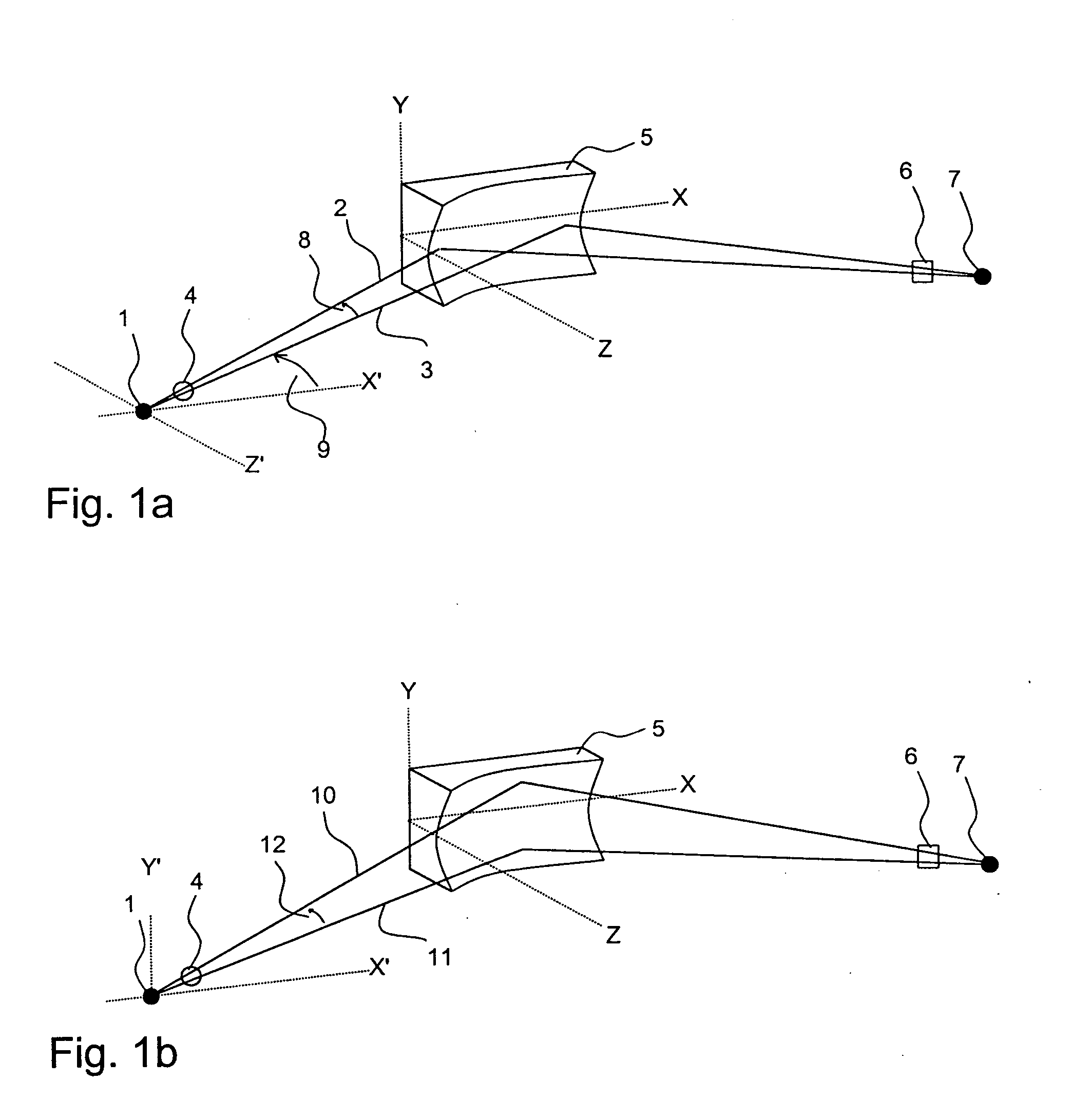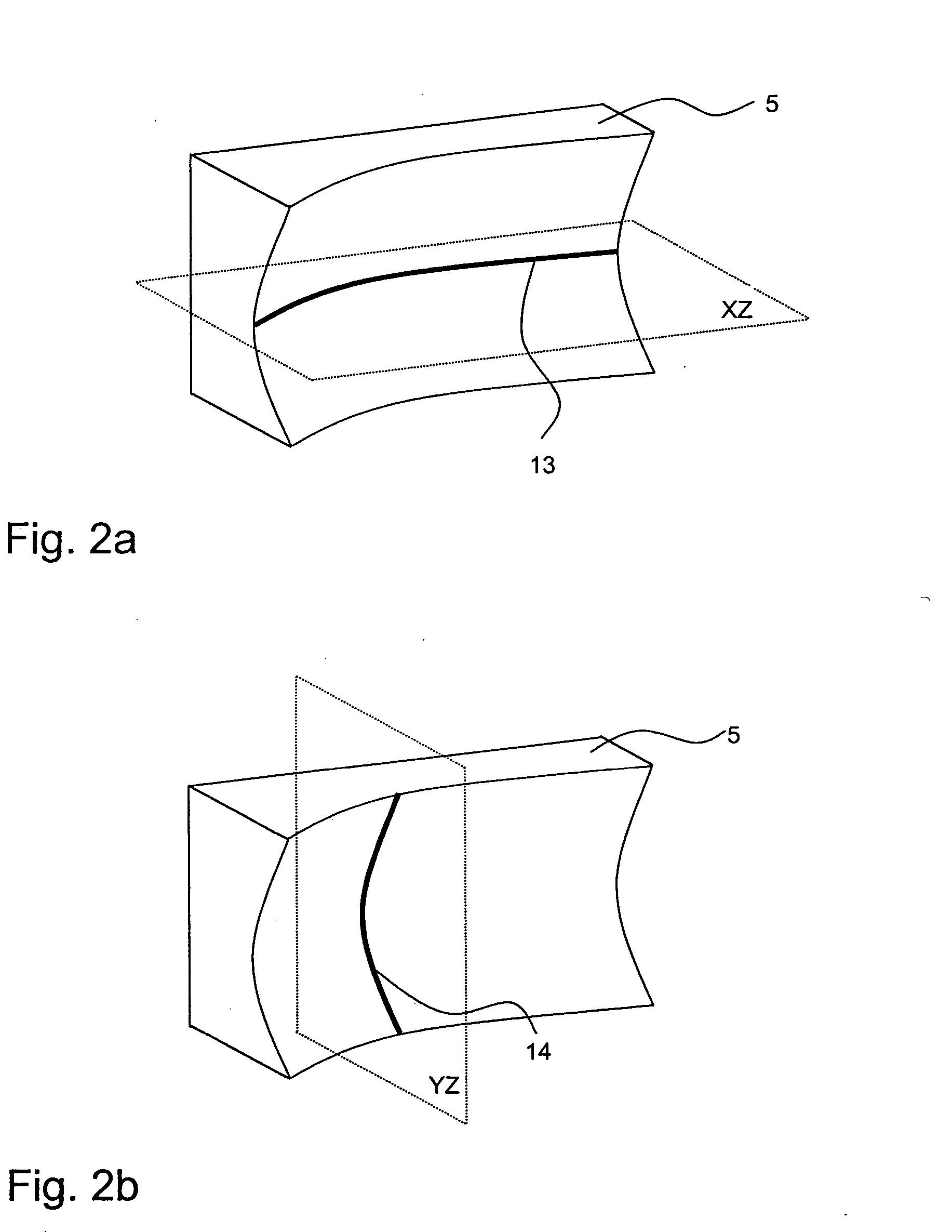Method for manufacturing a reflector for X-ray radiation
a technology of reflector and x-ray radiation, which is applied in the direction of electric discharge lamps, instruments, and associated parts, etc., can solve the problems of insufficient consideration of the divergence of beams perpendicular to the x-direction in the mirror plane, the limited reflectivity of the goebel mirror, and the inability to provide effective optical structural elements, etc., to achieve the effect of shortening the measuring time, maximizing the counting rate of the detector, and high reflection intens
- Summary
- Abstract
- Description
- Claims
- Application Information
AI Technical Summary
Benefits of technology
Problems solved by technology
Method used
Image
Examples
Embodiment Construction
[0051]FIG. 1 schematically shows the structure of an inventive X-ray analysis device. The X-ray source 1 emits X-ray radiation. FIG. 1a shows two beams 2 and 3 of this X-ray radiation. Both beams 2, 3 pass a collimator 4 and are incident on the reflecting surface of the inventive reflector 5. An orthogonal coordinate system X, Y, Z is associated with the reflector 5. The reflector is a gradient multi-layer mirror. The reflecting surface in the z-direction is formed by a periodic sequence of at least two layers of materials A, B with different refractive indices for the incident X-ray radiation. The respective layers extend approximately in neighboring XY planes. The reflecting surface of the reflector 5 is curved in two dimensions (see FIGS. 2a and 2b). In accordance with the invention, neither of the two curvatures has the shape of a circular arc.
[0052] The beams 2, 3 are reflected on the reflector 5, penetrate through the sample 6 and are registered in the X-ray detector 7.
[0053...
PUM
| Property | Measurement | Unit |
|---|---|---|
| reflecting surface width | aaaaa | aaaaa |
| width | aaaaa | aaaaa |
| angle | aaaaa | aaaaa |
Abstract
Description
Claims
Application Information
 Login to View More
Login to View More - R&D
- Intellectual Property
- Life Sciences
- Materials
- Tech Scout
- Unparalleled Data Quality
- Higher Quality Content
- 60% Fewer Hallucinations
Browse by: Latest US Patents, China's latest patents, Technical Efficacy Thesaurus, Application Domain, Technology Topic, Popular Technical Reports.
© 2025 PatSnap. All rights reserved.Legal|Privacy policy|Modern Slavery Act Transparency Statement|Sitemap|About US| Contact US: help@patsnap.com



